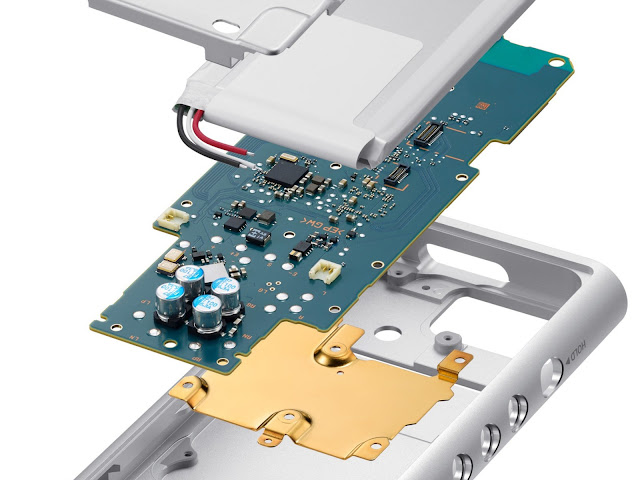dazzerfong
1000+ Head-Fier
I noticed that some pages back people were discussing the audio hardware difference between ZX300 and ZX507.
At first I was under the impression that they were identical, but after a bit of research I found otherwise (actually my real job field is also research and analytics).
There are a few key differences that will affect the sound between ZX300 and ZX507, these are all mentioned on Sony's site and interviews with the engineer's.
1. The gold color FT-Cap used in ZX507 is actually the same used throughout the Sony DMP-Z1, while the ZX300/WM1A/Z all use the blue FT-Cap.
-I'm not saying the gold is better, I'm just saying it is likely tuned to sound different to the blue version. This only affects the balanced output on the ZX507.


2. The ZX507 has double the capacitance for the single ended power supply, from 200uF on ZX300 to 400uF on ZX507, this only affects single ended but will result in much better single ended sound. WM1A/Z still have the ZX507 beat in this regard as they use FT-Caps for single ended rather than the Pos-Caps that ZX507 and ZX300 use.
(ZX507 on left, ZX300 on right).

3. The ZX507 uses a thick CNC milled copper block for the grounding and total shielding of digital section (a first for Walkmans actually).
ZX300/WM1A/Z only use thin copper sheet metal over the digital section and do not fully encase it, just rest on top. This actually means the grounding and shielding of the ZX507 is above even that of the WM1A, but not the WM1Z obviously as it's chassis is grounding heaven being made entirely of copper.
(ZX507 on left, ZX300 on right).


ZX507 solid copper block on left, CNC milled into full shield on the right.


ZX507 on left, note the high level of pcb contact (gold area) increasing shielding and grounding performance.
While ZX300 on the right only has a few small points of contact.


4. Solder, Sony had been using pure 99.99% Tin solder since ZX2, but improved that to Tin + Gold solder for the ZX507 and A100, and will use this for future Walkmans.
My all time favorite wire is actually Mundorf Silver Gold (1%), don't underestimate a bit of gold in the audio chain.
5. FPGA. All ZX and higher series have used an FPGA since ZX2, this means Sony can easily tune the sound of each model to harmonize well with and take most advantage of it's audio circuitry, which also means the ZX507 is bound to be tuned slightly differently to match it's change in audio hardware.
Just a fun fact if you are a science buff: The silver model of ZX507/ZX300 will actually perform very slightly better than the black, this is because the silver aluminum finish will have a lower electrical resistance compared to the anodized black model, this will affect the grounding performance of the chassis. This is also the reason Sony gold plates copper parts, to stop the copper oxidizing which increases the electrical resistance (oxidation can also look ugly).
Now just to be clear, some of these changes will be barely audible, although some people do have a knack for hearing minute changes.
But my point is that when you change this many different aspects of the device, it all adds up. I haven't heard the ZX300 and ZX507, but some people have said ZX507 sounds better than WM1A, others have said it sounds similar to ZX300. So as always, YMMV.
1. Caps are different because it's a revision of the old one. It's the same capacitance and rating. Make of that what you will.
2. Higher caps for power supply in theory leads to smoother power delivery. Generally not absolutely needed for digital devices with a well-regulated power source (battery), but not a bad thing either.
3. They needed to because the chipset they're using for the SoC is much noisier courtesy of its significantly higher power draw as well as the WiFi radio.
4. Silver is good because it doesn't have lead in it, and that's about the only good thing to say about it. Gold is bad for solder applications as it suffers from embrittlement, which leads to premature death of electronics. Think HP when it switched to ROHS/REACH compliant processes: computers dying left, right and centre. Fun fact: gold is actually less conductive than copper or silver.
5. No it doesn't use an FPGA. The S-Master is not an FPGA. The TA-ZH1ES does have an FPGA to convert PCM to DSD.
Bonus fact: that fact is wrong. Manufacturers leave a patch of tape on a hidden section of the enclosure so it doesn't get covered with plating/anodising, thus allowing a solid contact point. However, that would only apply if it shorts to the enclosure. The ZX300 never grounds to the enclosure: the mainboard is attached to the enclosure with no connections touching it (ala grounding point).
Well , there are some people who doesn’t take it that Sony uses FPGA .... :/
Because if they did, they'd brag about it like they did with their TA-ZH1ES, where it unambiguously states it's an FPGA. Happy to be proven wrong if you have proof.
Last edited:























 Does the silver one scratch badly? Right now it looks like someone painted a bulls-eye on my ZX300.........
Does the silver one scratch badly? Right now it looks like someone painted a bulls-eye on my ZX300......... or if your from Australia we can compare silver vs black if you go dark. I'd drive for a day just to prove to the internet I was right.
or if your from Australia we can compare silver vs black if you go dark. I'd drive for a day just to prove to the internet I was right.

